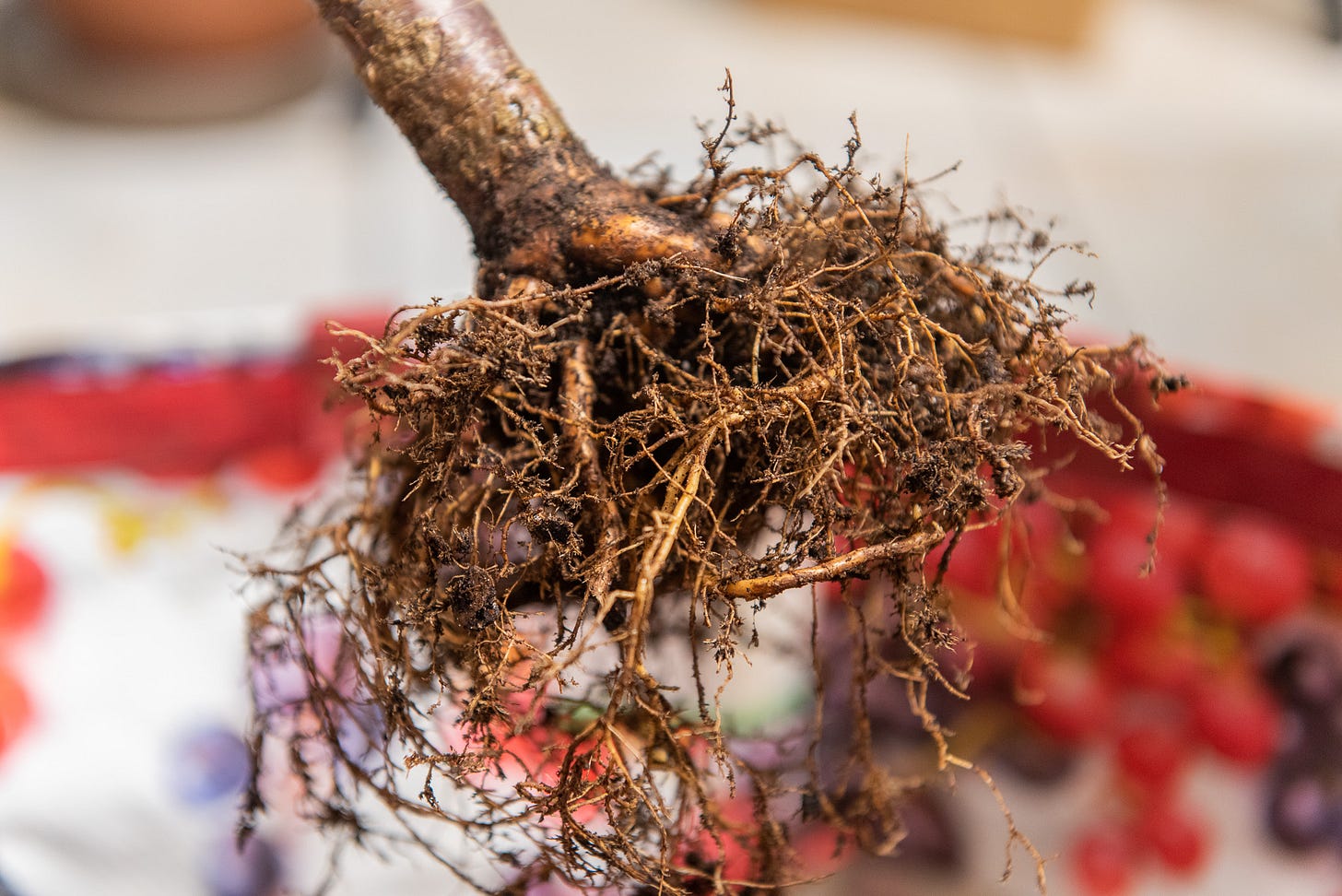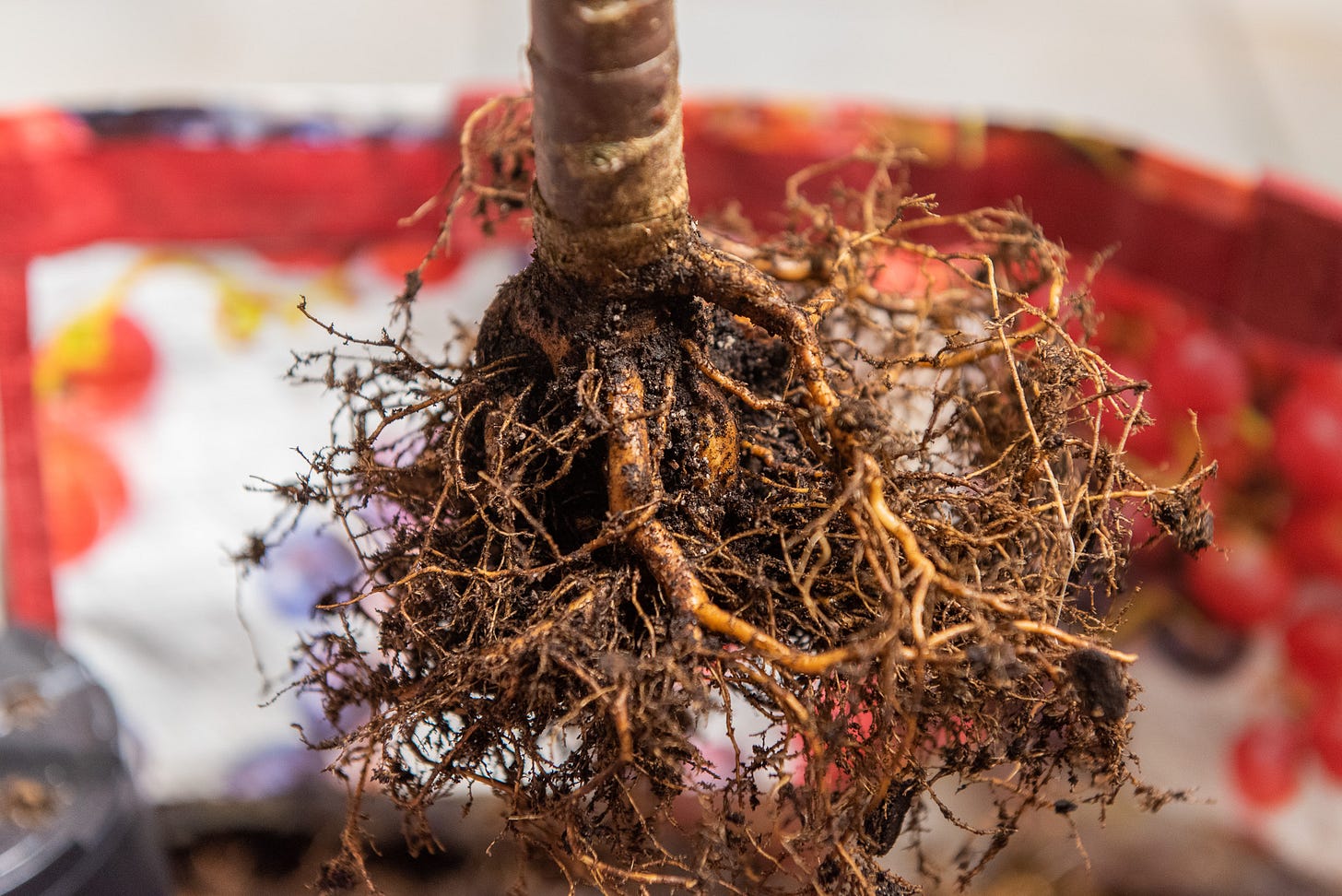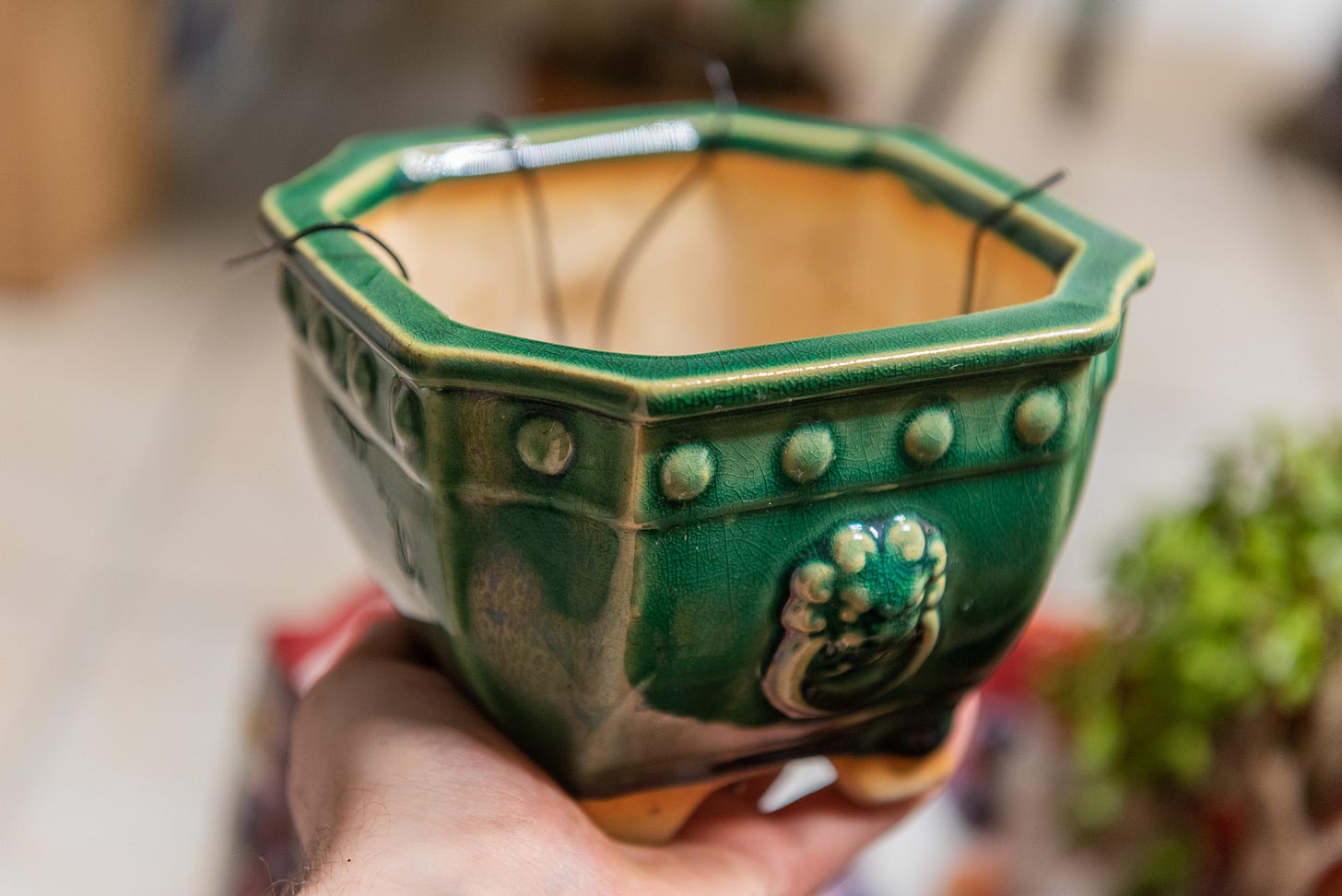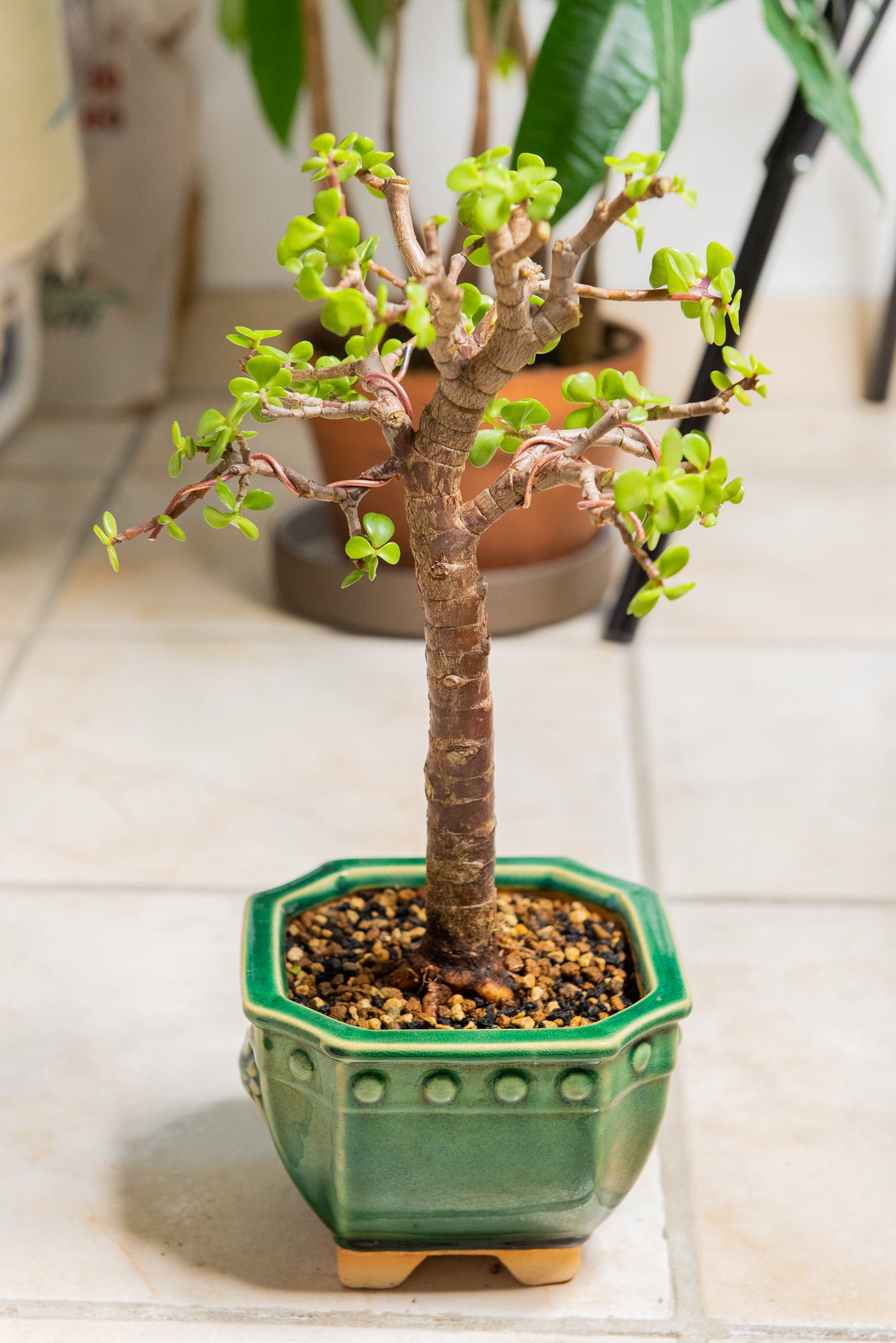The easiest beginner bonsai
Dwarf jade—aka Portulacaria afra, aka elephant bush, aka spekboom—is near impossible to kill.
Here is a tree that goes by many names. Portulacaria afra is a shrubby succulent native to South Africa, where it’s called elephant bush, porkbush, and spekboom in Afrikaans. The fast growing foliage is an important source of food for local elephants, and as the animals graze, they inadvertently propagate the plant by spreading cuttings that root into the soil. Isn’t that nice? The leaves are edible to us humans, too; they’re faintly sour and crunchy, like a dialed-down granny smith apple.
Portulacaria afra enjoys a reputation as a bulletproof houseplant that can survive all kinds of abuse and neglect. For the same reason it’s commonly recommended as a bonsai for beginners. Succulents aren’t my thing, but I’ve given a few of these trees as gifts and enjoy working on them. When I saw this specimen in my supermarket I knew it would make a fun project. A good excuse to talk about an unusual species.
Technically, Portulacaria afra isn’t a tree. It grows into a woody plant but doesn’t produce actual wood. You won’t see growth rings when you chop the trunk, and the bark is little more than a corky rind.
However it has many good attributes for bonsai. The leaves are naturally small and grow in dense patches. If you cut a branch just above a node, it will reliably split into two smaller branches pointed in the directions of the terminal leaves. Portulacaria afra responds well to drastic pruning; consider its mutualistic relationship with the grazing elephants.
Spekboom is adapted to long periods of drought under the blazing South African sun. It stores water in its pudgy leaves and is capable of vigorous growth even in bone dry soil. So unlike most bonsai, which require religious attentiveness to their water needs, this species thrives on negligence. Give it sufficient light and you can forget about it for days—maybe weeks—at a time.
This tree has an elegant upright trunk and dense, healthy foliage. Let’s check the roots.
Pretty good, for the supermarket.
I combed out the nursery soil with my fingers and a length of copper wire. Take care with them, as they’re delicate and break easily—the roots, not my fingers, though you shouldn’t get any ideas.
Portulacaria afra doesn’t tolerate temperatures below 50 degrees Fahrenheit. You can grow it outdoors on warm days and bring it inside before nighttime temperatures dip into the 40s. Or you can grow it indoors year round. Mine will live with my tropical trees, indoors 24/7 under powerful lights.
The more light you can give this species, the better. Remember, it’s adapted to scorching bushlands. If you keep it as a houseplant in a dim corner, it will survive, but it won’t grow sufficiently to train with bonsai techniques.
However I see this as a plus for beginners, who like to see and spend time with their first bonsai in their daily lives around their homes. You can’t do that with a juniper or maple. An elephant bush, though, you can hang with and study for months.
I bought this pot at a bonsai auction a while ago. I figured its candy shell glaze would go well with the elephant bush’s funny looking leaves.
I filled it halfway with granular bonsai mix and then spread the roots out radially. I poked wire through the bottom of the pot to anchor the roots in place. Then more bonsai mix, poking with my length of wire to fill in any air gaps.
Let’s give credit to the garden worker in charge of pruning this tree. They did a great job in giving it a convincing natural shape. I love the gentle swerve of the trunk and its curling flourish into a spray of branches.
All I needed to do was thin out the canopy and wire some lower branches. All of these cuttings could be rooted into new trees, but that’s one step away from feeding gremlins after midnight. Soon I’d be overwhelmed with a spekboom veld of my own making, like this Youtuber.
Two weeks later, the tree is pushing new growth. If this is how it behaves when recovering from transplant shock, I expect it to grow wild when it’s healthy.
Some bonsai people don’t consider spekboom to be “real” bonsai, and I get it. Even mature specimens retain the segmented, wormy look on their trunks. I see a cartoonish, surreal quality in the rigid leaves and stems, as if they were made for a Lego play set. Now why does that make me want to eat them more?
Tree reading
A Patagonian cypress in Chile believed to be over 5,000 years old may swipe the record of the world’s oldest tree. [Science Alert]
The majesty of Afghanistan’s vanishing forests. [Scientific American]














My longest surviving bonsai is a portulacaria afra. I’m getting ready for a major pruning in the next couple of weeks. It has survived very well indoors, despite a brief period of over fertilizing. Thanks for sharing this one!
IT IS SO CUTE
I WANT TO HUG IT